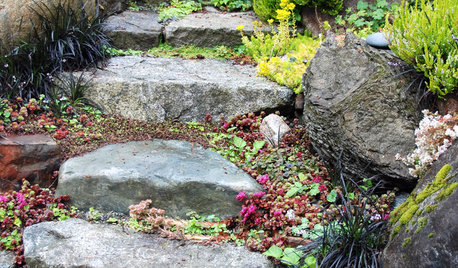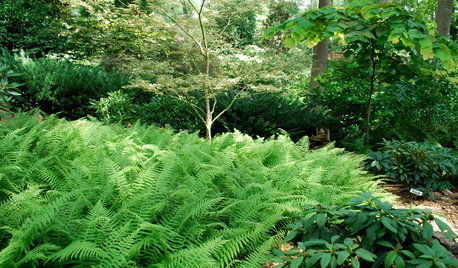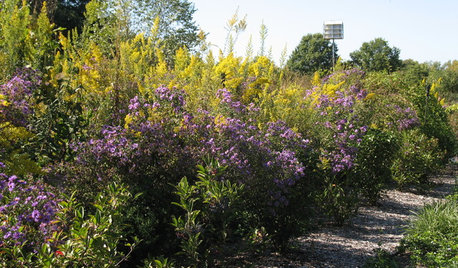hay roots invading garden
14 years ago
Related Stories

TRADITIONAL ARCHITECTURERoots of Style: Pueblo Revival Architecture Welcomes Modern Life
Centuries-old details of adobe construction still appeal in the desert Southwest, adapted to today's tastes
Full Story
LANDSCAPE DESIGNPlant Your Steps for a Great Garden Look
There are benefits to allowing plants to invade your garden stairs
Full Story
GARDENING GUIDESGreat Design Plant: Milkweed
Quit cringing. This not-weed plant is a sight to behold in the garden, has a delicious vanilla scent and is a magnet for butterflies
Full Story
GARDENING GUIDESCool-Season Vegetables: How to Grow Turnips
Sweeter after a taste of frost, these often-overlooked root vegetables can be a surprisingly tasty part of your fall garden
Full Story0

GARDENING GUIDESGreat Design Plant: Rhus Glabra
Smooth sumac provides powerful jolts of fall color and persistent fruit clusters that add interest through the winter
Full Story
COOL-SEASON CROPSCool-Season Vegetables: How to Grow Parsnips
This unfairly maligned root vegetable is the ideal choice for a winter garden, sweetening with the frost and having a long storage life
Full Story
PLANTING IDEASFerns: A Shade Gardener’s Best Friend
Bring rich texture and contrast to a dark woodland landscape with wonderfully diverse ferns
Full Story
GROUND COVERSNative Alternatives to English Ivy, Japanese Pachysandra and Periwinkle
These shade-loving ground covers are good for the environment and say something about where you are
Full Story
FLOWERS5 Sensational Flowering Vines for Warm Climates
Splash your garden with bright tropical color from late summer through fall with these showy trailing and climbing beauties
Full Story
GARDENING GUIDESGreat Design Plant: Solidago Speciosa
Showy goldenrod lives up to its name in eastern U.S. gardens, with bold, upright yellow flowers appearing in early fall
Full Story





david52 Zone 6
gardenlen
Related Professionals
Wrentham Landscape Architects & Landscape Designers · Belmont Landscape Architects & Landscape Designers · Byram Landscape Contractors · Cedar Hill Landscape Contractors · Commack Landscape Contractors · Kailua Landscape Contractors · Lynn Landscape Contractors · Middletown Landscape Contractors · Austin Decks, Patios & Outdoor Enclosures · Cincinnati Decks, Patios & Outdoor Enclosures · Green Bay Decks, Patios & Outdoor Enclosures · Hull Decks, Patios & Outdoor Enclosures · St. Louis Decks, Patios & Outdoor Enclosures · Waukesha Decks, Patios & Outdoor Enclosures · Canyon Lake Stone, Pavers & ConcreteTJG911Original Author
david52 Zone 6
jonas302
adirondackgardener
Kimmsr
TJG911Original Author
david52 Zone 6
david52 Zone 6
TJG911Original Author
david52 Zone 6
gardenlen
Kimmsr
TJG911Original Author
sugarmags
Kimmsr
flora_uk